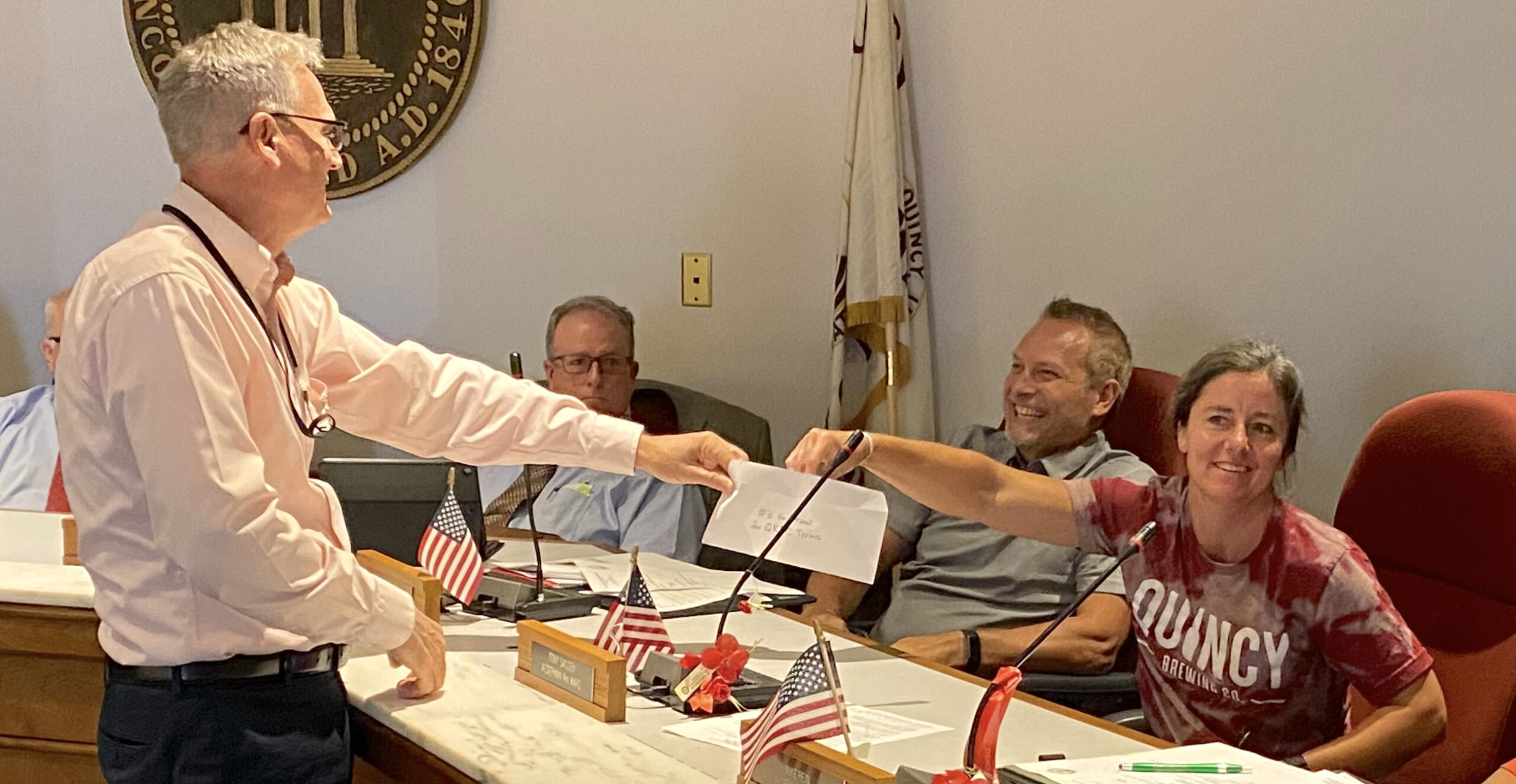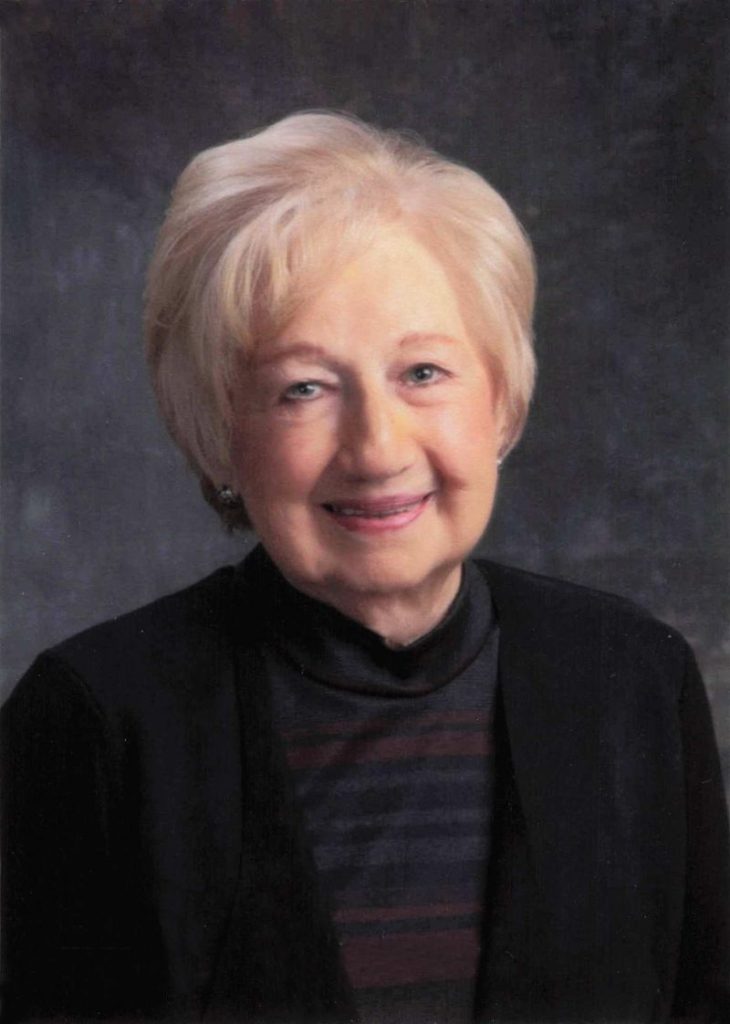Riverfront Development Corporation debates formation of, representation on 501(c)(3) foundation

QUINCY — The Quincy Riverfront Development Corporation is formed, and board members are selected. The next step is determining how the corporation will handle the money it receives.
That topic dominated Wednesday afternoon’s meeting in City Council chambers.
The nine-member board will guide the implementation of the riverfront master plan and oversee the development of 89 acres of Quincy riverfront spanning from Kentucky to Spring, Third Street to the riverfront and the Maine Street right of way from Third to Fourth.
Quincy Mayor Mike Troup told the corporation the city started working in April 2021 on the formation of a not-for-profit 501(c)(3) foundation to help raise money. He said asked attorney Hal Oakley, chairman of Schmiedeskamp, Robertson, Neu and Mitchell, and Mike Klingner, president and chief engineer of Klingner and Associates, to join himself on the foundation.
“We weren’t sure what was going to happen to the original riverfront committee, because they were working on the plan,” Troup said. “We wanted to start the fundraising, because we know we cannot solely count on the city, the county and the Park District to continue to fund every aspect of the riverfront development.”
Troup said he’s waiting on approval from the Internal Revenue Service to create the foundation. He said he asked only two people to be on the foundation “so it was easier” when signatures or a quick responses are needed.
“We’ve got a targeted list of other groups and individuals who are willing to invest,” Troup said. “We’ve had several conversations with a handful of people who would start (donating). The hesitation was they didn’t want to write a check to the foundation without knowing it is a certified IRS approved 501(c)(3).”
Craig wants more representation on foundation
Troup hoped the foundation would get IRS approval by the end of July.
Corporation member Tieraney Craig believes most of the nine members agree with the creation of a funding mechanism. However, she was hesitant to have just three people on the foundation.
“It’s taken a lot to get three entities and the public together on this project,” she said. “I know this project is going to be a long haul. We’re looking at years and years and years. Down the line, everybody needs to be represented from those (public taxing) entities and from the public (on the foundation). … It’s just imperative. We would all feel better if there was one member from each entity on there. Chuck (Bevelheimer, director of planning and development) isn’t going to be here forever. I know (Troup isn’t) going to be here forever. I’m thinking long term.”
Corporation member Duane Venvertloh said he thought Troup’s effort to form the foundation was “noble.” However, he suggested the QRDC board file for its own charitable designation and meld the corporation and the foundation into one group comprising the same nine members.
“What (Troup has) done is to be applauded. Thank you. But to move forward, (creating a separate foundation) just seems cumbersome and confusing to me,” Venvertloh said.
Troup said he chose Klingner and Oakley because each had raised money from other nonprofit groups.
“We all came in with a list of who is on our contact list. We’ve had conversations with individuals and some other organizations,” Troup said. “So I’m optimistic we’re going to raise some significant money. We’ve had conversations, but we’ve not really gone out for a full press because we’re lacking that IRS final approval.”
Steinkamp ‘didn’t sign up’ to be fundraiser
QRDC president Jeff Steinkamp said he “didn’t sign up” to be a fundraiser when he agreed to join the corporation. He pointed out agreements the Quincy Park District has with the Friends of the Trails and the Friends of the Castle, which raise money that the Park Board manages for specific projects.
“At some point, we have to raise funds,” Craig said. “So you have to raise the funds to get somebody in here to start to professionally raising that money.”
“What we’ve done is we’ve bypassed all that,” Troup said.
“No, you’ve politicized it. That’s what you’ve done,” Venvertloh said. “That’s what this board is not about. We tried to avoid politicking.”
The corporation did not act on adding more people to the foundation Troup created. However, Steinkamp asked the corporation to consider adding four of its members — one each representing the city, county, and Park District, and one at-large member — to the foundation. Troup said he was open to that idea.
Asked about Steinkamp’s proposal after the meeting, Venvertloh agreed one member representing the city, county and Park District should be added. However, he wants all three at-large members — Craig, Jeff Grimm and Melanie Allen — added as well.
“Now the public’s represented, the taxing bodies are represented, and the folks who did the due diligence to put the foundation together are represented,” Venvertloh said. “That’s a win win.”
In other business, the corporation learned its articles of incorporation were submitted to the state. Allen, Craig, Steinkamp and Mike Mahair will serve as the board of directors.
Grant request made to National Scenic Byways Program
The corporation also drew numbers out of an envelope to stagger the length of the first term for each member. Steinkamp, Dave Bauer and Dave Bellis have one-year terms. Mahair, Allen and Rick Ehrhart have two-year terms. Venvertloh, Craig and Grimm have three-year terms.
“This does not mean you’re limited to a one-year term. You can serve up to three full terms,” Bevelheimer said. “This establishes, in the by-laws, the starting point for each member here.”
The corporation also learned the electrical line burial project along the riverfront is in its last phase of design work. Bevelheimer said the city is “potholing” where the lines are before it puts the project out to bid.
“So when we bid it, we know exactly where our utilities are as it relates to the alignment for the buried power lines,” Bevelheimer said.
Bevelheimer and Jason Parrott, community development planner for the city, updated the corporation on requests for allocations to help pay for the electrical line burial project from Sen. Dick Durbin and Rep. Darin LaHood. Parrott said the request to LaHood also included money for a dock for cruise ships. He estimated 50 ships bypass Quincy each year, costing the city about $1 million in revenue.
The city also applied for a National Scenic Byways Program grant through the U.S. Department of Transportation’s Federal Highway Administration. The FHWA administers the byways program to recognize, preserve and enhance selected roads throughout the nation. The Consolidated Appropriations Act of 2021 included $16 million for the NSBP — the first Congressional appropriations for the program since 2012 — and directed FHWA to make more NSBP designations.
“They were anticipating more than 250 applications from across the nation, and a few dozen would probably be funded,” Parrott said. “So it’s one of those, you give it a shot.”
Miss Clipping Out Stories to Save for Later?
Click the Purchase Story button below to order a print of this story. We will print it for you on matte photo paper to keep forever.

